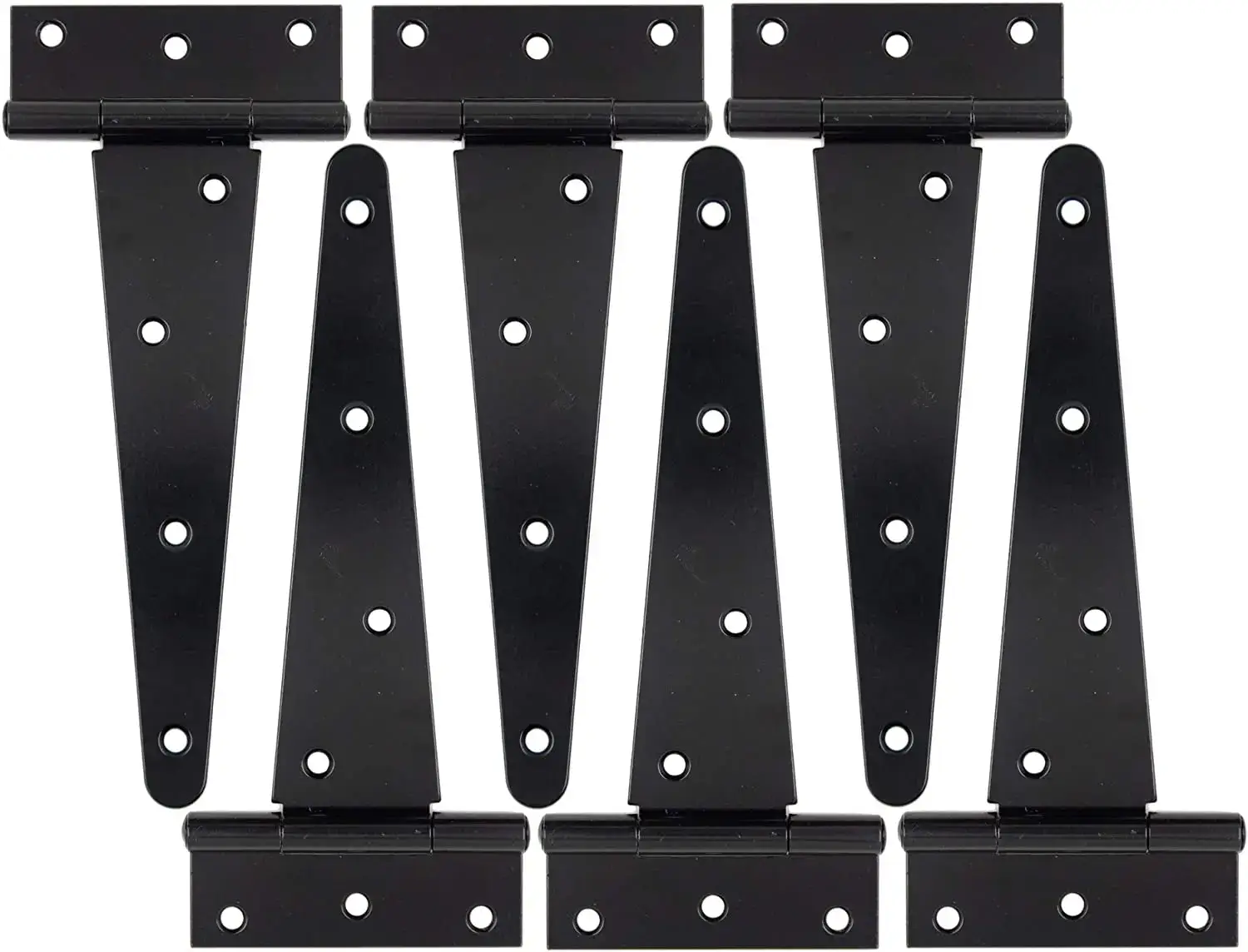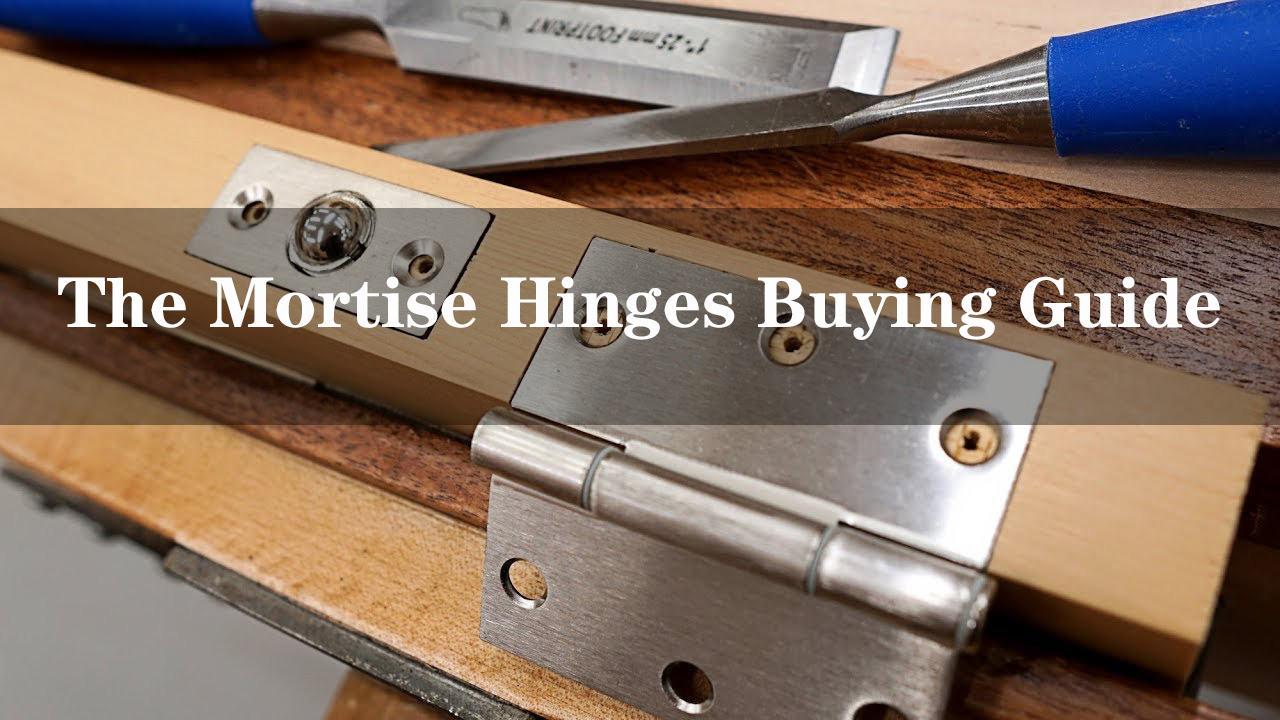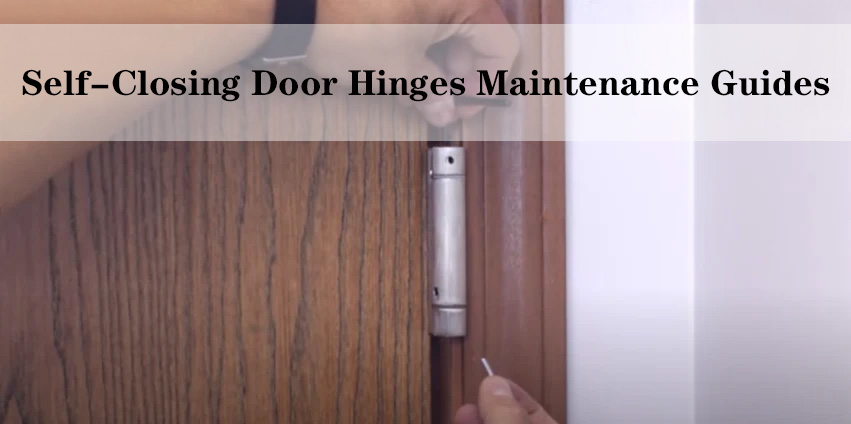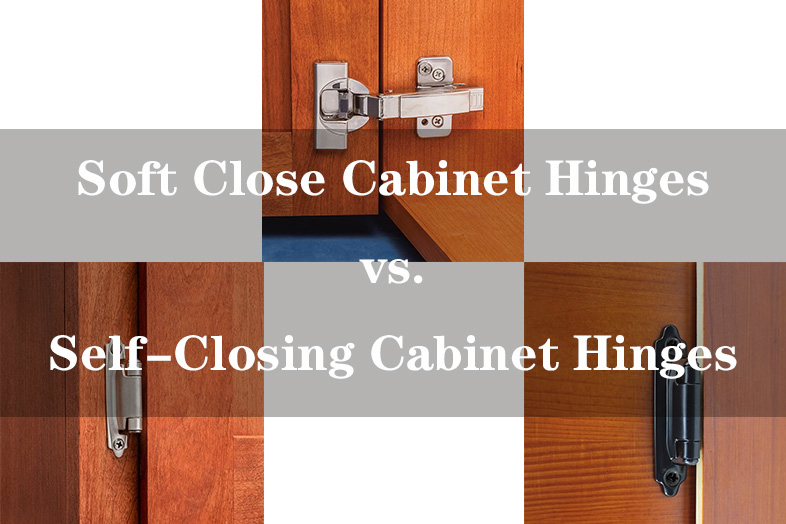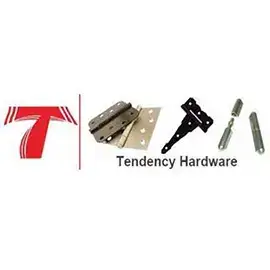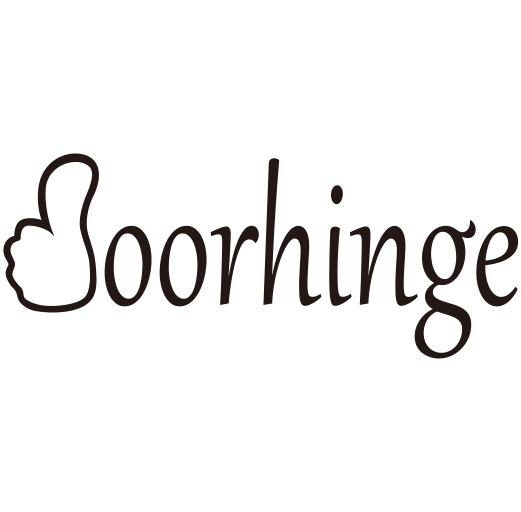In the world of gates, hinges are the unsung heroes that hold the key to smooth operation and security. Picture your gate as a grand entrance, and the hinges as its loyal guardians, ensuring it swings open with grace and closes with a reassuring thud. But not all hinges are created equal, and the quest for the right one is akin to finding the perfect puzzle piece. In this comprehensive guide, we’ll walk you through the process of selecting the right T hinges for your gate project. By the end, you’ll be well-equipped to ensure that your gate swings smoothly and securely.
Understanding T Hinges
T hinges are a classic type of hinge that derives its name from its shape – resembling the letter “T” when installed. They consist of two plates: one plate attaches to the gate, while the other is mounted on the post or frame. The two plates are connected by a hinge pin, allowing the gate to swing open and closed effortlessly.
Step 1: Identify Your Gate Material
The first step is to determine the material of your gate. T hinges are versatile and can work well with both wooden and metal gates. However, the choice between the two materials will influence the type of T hinge that best suits your needs.
Step 2: Precise Measurements Matter
Accurate measurements of your gate’s height and width are essential. These measurements will play a crucial role in selecting T hinges that are proportionate to your gate, ensuring a balanced and smooth swinging motion.
Step 3: Consider Gate Weight
T hinges come in various sizes to accommodate different gate weights. It’s essential to consider the weight of your gate to ensure that the selected hinges can bear the load without sagging or compromising stability.
Step 4: Choose the Right Finish
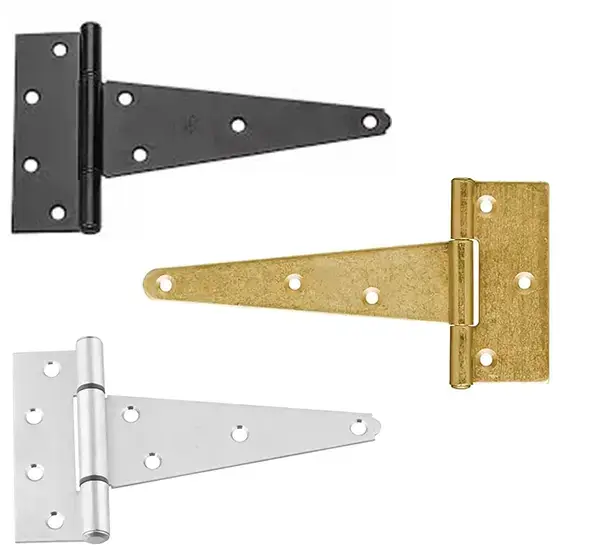
T hinges offer an array of finishes, each with its own unique character and advantages. Here are some common finishes you might come across:
Black Finish: A classic choice, black-finished T hinges exude timeless elegance. They seamlessly complement a variety of gate styles and materials.
Zinc Finish: Opting for zinc-coated T hinges grants them added protection against rust and corrosion. This is particularly valuable if your gate faces the elements.
Galvanized Finish: Galvanized T hinges boast a protective layer that shields against rust and weather-induced wear. They’re a dependable choice for durability.
Stainless Steel Finish: A stainless steel finish provides a modern and sleek appearance. It is highly resistant to corrosion, making it an excellent choice for gates exposed to moisture and the elements.
Bronze Finish: A bronze finish imparts a rich and warm look to your T hinges. It’s a fantastic option for gates that require a touch of sophistication and depth.
Powder-Coated Finish: Powder-coated finishes offer a wide range of color options and provide an extra layer of protection against rust and fading. This finish can be customized to match your gate’s color scheme.
Antique Finish: If you’re aiming for a vintage or rustic aesthetic, an antique finish could be the perfect fit. It adds character and a weathered charm to your T hinges.
Step 5: Understanding Offset
Zero Offset: In this scenario, the hinge pin is aligned with the mounting plates, resulting in the gate and the post being in a straight line when the gate is closed. This provides a full swing clearance for the gate.
Positive Offset: A positive offset implies that the hinge pin is located beyond the plane of the gate. This configuration ensures that the gate swings clear of any obstructions, such as uneven ground or nearby structures.
Negative Offset: A negative offset means the hinge pin is positioned towards the gate’s interior. This arrangement can be useful when there’s a need for a partial swing, such as in confined spaces.
If you want your gate to swing fully clear of any obstacles or uneven terrain, a positive offset is a wise choice. For gates in confined spaces or where a partial swing is preferable, a negative offset allows the gate to remain partially within the gate opening.
Step 6: Determine Swing Direction

Decide whether you want your gate to swing inwards, outwards, or both ways. T hinges provide flexibility in terms of swing direction, so consider factors such as your gate’s location and your convenience.
Step 7: Prioritize Durability
Opt for T hinges constructed from durable materials, such as steel or stainless steel. Durability ensures that your hinges can withstand varying weather conditions and the test of time, providing reliable performance.
Step 8: Explore Self-Closing Options
If you desire the convenience of an automatically closing gate, look for T hinges equipped with a self-closing feature. This feature is particularly advantageous for security purposes and offers peace of mind.
Step 9: Tap into Customer Insights
Before finalizing your purchase, take advantage of customer reviews. Real-world experiences shared by others can offer valuable insights into the quality, performance, and durability of the T hinges you’re considering.
Step 10: Installation and Ongoing Maintenance
Once you’ve procured your T hinges, meticulously follow the manufacturer’s installation instructions. Regularly inspect the hinges for signs of wear, rust, or damage. If necessary, apply lubrication to ensure smooth operation and longevity.
In Conclusion: Make an Informed Choice
While selecting T hinges might appear to be a minor aspect of gate construction, it significantly contributes to the overall functionality and appearance of your gate. By following these comprehensive steps and considering factors such as gate material, weight, finish, and swing direction, you’ll be empowered to choose T hinges that provide a seamless and enduring solution for your gate. Investing time in selecting the right T hinges ensures that your gate not only functions smoothly but also adds to the aesthetic appeal of your property. So, take a deliberate approach, make an informed decision, and relish the convenience and stability that well-chosen T hinges bring to your gate project.

